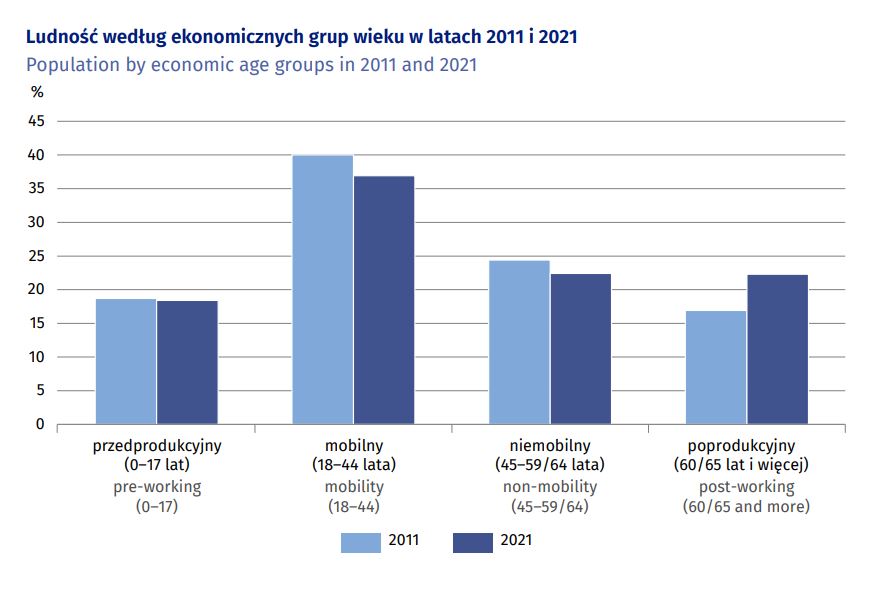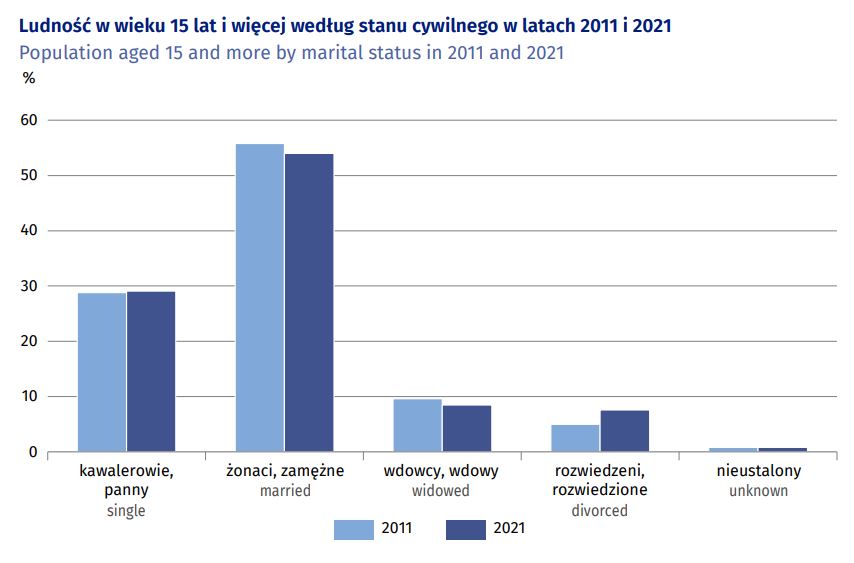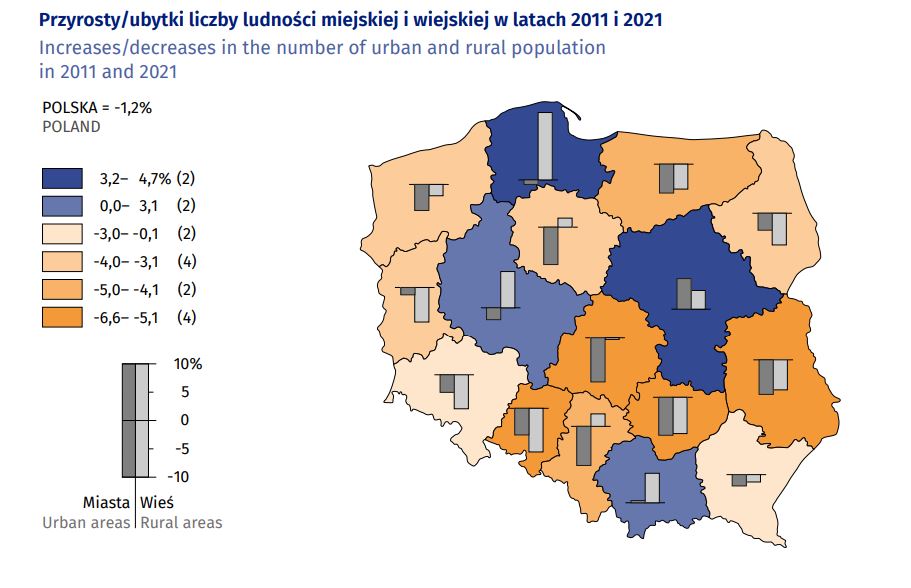The latest release of data from last year’s national census has provided further insights into the ageing of Poland’s society, as well as revealing a shift of the population away from big cities to rural areas and an increase in the proportion of people who are divorced.
The new figures – published by Statistics Poland (GUS), a state agency – add further detail to the preliminary data published in January. The full findings of the census will be released later this year.
In its new report, GUS notes that the proportion of society above the retirement age of 60 for women and 65 for men rose from 16.9% at the time of the last census in 2011 to 22.3% in 2021. Meanwhile, the number of people of working age dropped by two million, or three percentage points as a proportion of the population.
“The decreasing percentage of children and young people and the ageing of the working-age population, as well as the increasing share of the population of retirement age, constitute a constant trend observed for a number of years,” notes GUS.
“The main cause is the low fertility rate, which does not guarantee a simple replacement of generations [and] deepens the ageing of Polish society.”

Poland has long suffered one of Europe’s lowest fertility rates, something that the current Law and Justice (PiS) government has sought to address through a series of “pro-family” measures, including generous new child benefit payments.
However, as the government itself has admitted, these policies have so far failed to increase the birth rate, leading it to unveil a further package of measures last year.
After it came to power, PiS also reversed a decision by the previous Civic Platform (PO) government to raise the retirement age to 67. Yet in recent times it has sought to encourage Poles to work longer, including a tax change this year cutting income tax to zero for seniors who postpone their retirement.
In its new report, GUS points to the increased dependency ratio, that is the number of people of non-working age compared to those of working age. In 2021, there were 69 people of non-working age for every 100 people of working age, nearly 14 more than in 2011.
The statistics office emphasised, however, that while the number of seniors in Polish society has risen substantially, more of them (over twice as many as in 2011) remain professionally active despite reaching the retirement age.
“[It] is a result of, on the one hand, the ageing of the population and, consequently, the labour resources, but also of legal changes which make it possible to extend the professional activity, including by combining work and retirement benefits,” said GUS.
The new figures also show that, among those aged 15 and above, the majority are married. But the proportion has fallen slightly over the past 10 years, from 56% to 54%.
Meanwhile, the proportion of divorced people increased from 5% in 2011 to 7.6% in 2021, while single people represent around 29% of Polish society, roughly unchanged since the last census.

The structure of the rural and urban population has also shifted, with the new data indicating that some Poles are leaving cities while in the countryside the population is increasing.
“There was a decrease in the population in cities – by 657,000 people – while the number of rural residents increased by 181,300,” notes GUS. “[This] was largely due to the development of suburban centres (usually clustered around large cities), which were fed with young people, former inhabitants of cities.”
The highest increase in the rural population was recorded in the Pomeranian province, with dynamically developing suburbs around the Tricity (Gdańsk, Sopot, Gdynia) region on the Baltic coast.

Poland’s national census was conducted between April and September last year, meaning that it does not take into account the arrival of large numbers of refugees from Ukraine since Russia’s invasion in February this year.
It is estimated that between 1.5 million and 2 million Ukrainian refugees are in Poland, with almost half of them being children and most of the remainder women of working age.
Main image credit: Matthias Zomer on Pexels. Infographics: GUS

Alicja Ptak is senior editor at Notes from Poland and a multimedia journalist. She previously worked for Reuters.



















